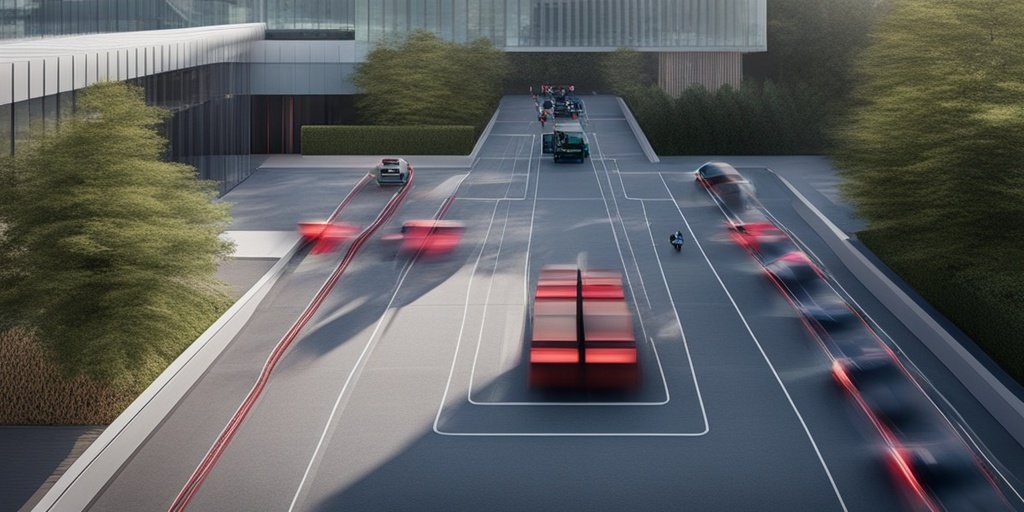⚡ Quick Summary
This study presents a novel system for face mask identification and social distance monitoring using Unmanned Aerial Vehicles (UAVs) and advanced deep learning techniques. The approach utilizes a combination of Enhanced Cuckoo Methodology and Faster R-CNN to effectively detect mask-wearers in various environments.
🔍 Key Details
- 📊 Dataset: 16,000 training images and 12,751 testing images from GitHub and Kaggle
- ⚙️ Technology: Enhanced Cuckoo Methodology (ECM) and Faster R-CNN with Adaptive Galactic Swarm Optimization (AGSO)
- 🏆 Performance Metrics: Precision, recall, F1-score, and speed
- 🔄 Methodology: 10-fold cross-validation for model training
🔑 Key Takeaways
- 🚁 UAVs are utilized for outdoor surveillance to monitor mask compliance and social distancing.
- 🖼️ Image Processing includes converting images to grayscale and enhancing contrast using Optimum Wavelet-Based Masking.
- 🔍 Gabor-Transform and Stroke Width Transform are employed to extract features for classification.
- 📈 WNBC is used for detecting masks in images based on extracted attributes.
- 📡 Real-time alerts are sent to healthcare professionals and law enforcement for unmasked individuals.
- 🔊 Automated systems in UAVs can alert the public about social distancing violations.
- 🌐 The study addresses challenges in mask detection in uncontrolled environments.
- 📊 The approach shows promise for enhancing public health safety measures.

📚 Background
The COVID-19 pandemic has highlighted the importance of mask-wearing and social distancing as critical measures to curb the spread of the virus. Traditional methods of monitoring compliance can be labor-intensive and inefficient. The integration of technology, particularly through UAVs and deep learning, offers a promising solution to enhance public health surveillance and ensure adherence to safety protocols.
🗒️ Study
This study proposes a comprehensive system that leverages UAVs equipped with cameras to monitor outdoor environments for mask compliance and social distancing. The researchers employed advanced image processing techniques to enhance the quality of images captured in uncontrolled settings, making it easier to detect whether individuals are wearing masks.
📈 Results
The proposed system demonstrated significant efficacy in detecting face masks and monitoring social distancing. By utilizing a combination of ECM and deep learning algorithms, the model achieved high precision and recall rates, indicating its potential for real-world applications in public health monitoring.
🌍 Impact and Implications
The implications of this study are profound, as it showcases how technology can be harnessed to improve public health safety measures. By implementing UAVs for monitoring, authorities can ensure better compliance with health guidelines, ultimately contributing to the reduction of virus transmission in crowded areas. This approach could pave the way for similar applications in future public health crises.
🔮 Conclusion
This study highlights the transformative potential of UAV technology combined with deep learning for monitoring public health compliance. As we continue to navigate the challenges posed by pandemics, such innovative solutions can play a crucial role in safeguarding communities. Further research and development in this area are encouraged to enhance the effectiveness of health monitoring systems.
💬 Your comments
What are your thoughts on using UAVs for public health monitoring? We would love to hear your insights! 💬 Share your comments below or connect with us on social media:
Face mask identification with enhanced cuckoo optimization and deep learning-based faster regional neural network.
Abstract
A mask identification and social distance monitoring system using Unmanned Aerial Vehicles (UAV) in the outdoors has been proposed for a health establishment. The above approach performed surveillance of the surrounding area using cameras installed in UAVs and internet of things technologies, and the captured images seem useful for tracking the entire environment. However, innate images from unmanned aerial vehicles show an adaptable visual effect in an uncontrolled environment, making face-mask detection and recognition harder. The UAV picture first had to be converted to grayscale, then its contrast was amplified. Image contrast was improved using Optimum Wavelet-Based Masking and the Enhanced Cuckoo Methodology (ECM). According to the contrast-enhanced image, Gabor-Transform (GT) and Stroke Width Transform (SWT) methods are used to derive attributes that help categorise mask-wearers and non-mask-wearers. Using the retrieved attributes, a Weighted Naive Bayes Classification (WNBC) detected masks in the images. Additionally, a deep neural network-based, the faster Region-Based Convolutional Neural Networks (R-CNN) algorithm combined with Adaptive Galactic Swarm Optimization (AGSO) is being used to identify appropriate and incorrect face mask wear in images, as well as to monitor social distancing among individuals in crowded areas. When the system recognises unmasked individuals, it sends their information to the doctor and the nearby police station. One unmanned aerial vehicle’s automated system alert people via speakers, ensuring social spacing. The problem involves a large percentage of appropriate and incorrect face mask wear using data from GitHub and Kaggle, including a training repository of 16,000 images and a testing data set of 12,751 images. To enhance the performance of the model’s learning, the methodology of 10-fold cross-validation will be used. Precision, recall, F1-score, and speed are then measured to determine the efficacy of the suggested approach.
Author: [‘Pandey BK’, ‘Pandey D’, ‘Lelisho ME’]
Journal: Sci Rep
Citation: Pandey BK, et al. Face mask identification with enhanced cuckoo optimization and deep learning-based faster regional neural network. Face mask identification with enhanced cuckoo optimization and deep learning-based faster regional neural network. 2024; 14:29719. doi: 10.1038/s41598-024-78746-z